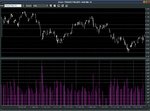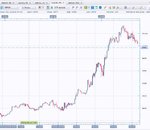Oscar Reed
Senior member
- Messages
- 2,485
- Likes
- 739
Can we get 10,700 before month end.
ECB are effectively paying banks to take up liquidity, while they get the secondary kicker of also being paid by consumers to on-lend. The measures announced have moved the goalposts from indirectly targeting a weaker euro, and in turn increasing competitiveness and domestic demand, to compel the commercial banks to extend credit and hopefully boost inflation. European banks have and should continue to outperform from here.
Also with Easter coming up and sell in May.
Perfect recipe,
ECB are effectively paying banks to take up liquidity, while they get the secondary kicker of also being paid by consumers to on-lend. The measures announced have moved the goalposts from indirectly targeting a weaker euro, and in turn increasing competitiveness and domestic demand, to compel the commercial banks to extend credit and hopefully boost inflation. European banks have and should continue to outperform from here.
Also with Easter coming up and sell in May.
Perfect recipe,




